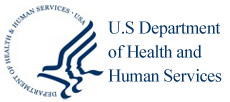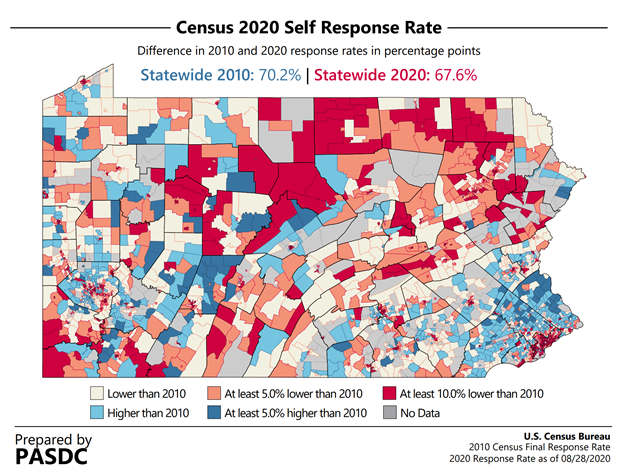- Eight Hospitals Selected for First Cohort of Rural Hospital Stabilization Program
- Announcing the 2030 Census Disclosure Avoidance Research Program
- CMS: Medicare Program; Hospital Inpatient Prospective Payment Systems for Acute Care Hospitals and the Long-Term Care Hospital Prospective Payment System and Policy Changes and Fiscal Year 2026 Rates; Requirements for Quality Programs; and Other Policy Changes; Correction
- CMS: Medicare Program; Hospital Inpatient Prospective Payment Systems for Acute Care Hospitals and the Long-Term Care Hospital Prospective Payment System and Policy Changes and Fiscal Year 2026 Rates; Requirements for Quality Programs; and Other Policy Changes; Correction
- CMS: Medicare and Medicaid Programs; Contract Year 2026 Policy and Technical Changes to the Medicare Advantage Program, Medicare Prescription Drug Benefit Program, Medicare Cost Plan Program, and Programs of All-Inclusive Care for the Elderly; Correction
- CMS: Medicare and Medicaid Programs; Contract Year 2026 Policy and Technical Changes to the Medicare Advantage Program, Medicare Prescription Drug Benefit Program, Medicare Cost Plan Program, and Programs of All-Inclusive Care for the Elderly; Correction
- CMS: Medicare Program; FY 2026 Hospice Wage Index and Payment Rate Update and Hospice Quality Reporting Program Requirements
- CMS: Medicare Program; Prospective Payment System and Consolidated Billing for Skilled Nursing Facilities; Updates to the Quality Reporting Program for Federal Fiscal Year 2026
- Public Inspection: CMS: Medicare Program: Prospective Payment System and Consolidated Billing for Skilled Nursing Facilities; Updates to the Quality Reporting Program for Federal Fiscal Year 2026
- Public Inspection: CMS: Medicare Program: Fiscal Year 2026 Hospice Wage Index and Payment Rate Update and Hospice Quality Reporting Program Requirements
- CMS: Medicare and Medicaid Programs; CY 2025 Payment Policies Under the Physician Fee Schedule and Other Changes to Part B Payment and Coverage Policies; Medicare Shared Savings Program Requirements; Medicare Prescription Drug Inflation Rebate Program; and Medicare Overpayments; and Appeal Rights for Certain Changes in Patient Status; Corrections and Correcting Amendment
- CMS: Request for Information; Health Technology Ecosystem
- CMS: Medicare and Medicaid Programs; CY 2025 Payment Policies Under the Physician Fee Schedule and Other Changes to Part B Payment and Coverage Policies; Medicare Shared Savings Program Requirements; Medicare Prescription Drug Inflation Rebate Program; and Medicare Overpayments; and Appeal Rights for Certain Changes in Patient Status; Corrections and Correcting Amendment
- VA: Staff Sergeant Fox Suicide Prevention Grant Program Funding Opportunity
- HHS: Request for Information (RFI): Ensuring Lawful Regulation and Unleashing Innovation To Make American Healthy Again
COVID-19 & Oral Health: Resource for School Nurses
During the current pandemic, school nurses may be the only avenue for assuring that children receive dental screenings/referrals. The Association and State and Territorial Dental Directors (ASTDD) and the National Association of School Nurses have collaborated to develop a resource to assist with doing so. Please share the below resource with any school nurses you may work with or know.
Report Focuses on Networks for Oral Health Integration
The National Maternal and Child Oral Health Resource Center (OHRC) produced a report that provides information about the “Networks for Oral Health Integration Within the Maternal and Child Health Safety Net” projects funded by the Maternal and Child Health Bureau (MCHB). The goal of the 5-year initiative is to improve access to and utilization of comprehensive, high-quality oral health care in community health centers for target populations (i.e., pregnant women, infants and children from birth to age 40 months, children ages 6–11) at high risk for oral disease.
CMS Hasn’t Started Garnishing Medicare Pay to Recoup $100 Billion in Loans
Hospitals that received COVID-19 relief loans from Medicare expected that CMS would cut off their fee-for-service reimbursement after four months, but as deadlines have passed the agency apparently hasn’t started garnishing payments. State and national hospital associations, providers and consultants that work with providers said their reimbursements remain the same although CMS said it would begin recouping Medicare Accelerated and Advance Payment Program funds. In March and April, hospitals received more than 80% of the $100.3 billion in relief loans from CMS.
Pennsylvania Governor Renews Coronavirus Disaster Declaration
Pennsylvania Governor Tom Wolf announced on September 1 that he has renewed a 90-day disaster declaration, now for a second time, after he originally signed it in early March following the confirmation of the first positive cases of the coronavirus in Pennsylvania.
The original declaration was set to expire Tuesday, and the new declaration will last through late November, unless Wolf ends it.
“We are going to continue to combat the health and economic effects of COVID-19, and the renewal of my disaster declaration will provide us with resources and support needed for this effort,” Wolf said in a statement.
Under state law, an emergency disaster declaration gives governors the authority to issue or rescind executive orders and regulations, access stockpiles of emergency supplies and equipment and suspend laws or regulations that govern state agencies.
Executive orders have the force of law, under emergency disaster law. As part of it, the Pennsylvania Emergency Management Agency has been able to assign missions to the National Guard, and it could in the future allow PEMA to rapidly deploy a vaccine, Wolf’s office said.
HHS Providing Up to 125M Face Masks to Schools

HHS is working to support safe school reopening for students, teachers and staff. In support of this, HHS is providing up to 125 million cloth face masks to states and territories for distribution to schools. The Administration intends for these masks to support students, teachers and staff in public and private schools that are reopening – with an emphasis on students who are low-income (or otherwise with high needs) and schools providing in-person instruction.
These masks will be allocated according to the share of students from low-income families in each state. The cloth face masks will be distributed in two shipments, starting in early September 2020.
Additional information on Cloth Face Masks in Schools and State Allocations: Cloth Face Masks in Schools can be found on ASPR’s public facing website.
Pennsylvania Census 2020 Updates
Pennsylvania Census Completion Map for August 2020

- A recent article by NPR highlights how changes to operational timelines may limit the ability for the U.S. Census Bureau to adequately review the data, possibly affecting the data’s accuracy.
- The U.S. Census Bureau announced a new survey, the 2020 Census User Experience Survey, which will measure how satisfied respondents were with their experience using the online questionnaire.
- According to the U.S. Census Bureau’s daily 2020 Census housing unit completion rates, over 73% of housing units have been accounted for in the 2020 Census.
- The U.S. Census Bureau recently released a presentation providing updates for their operational planning and how the Bureau is adapting operations to ensure a complete and accurate count by December 31, 2020.
- Follow response rates to the 2020 Census with the U.S. Census Bureau’s Response Rates page. Or check out the Hard To Count 2020 tool created by SUNY’s Center for Urban Research which has a variety of other useful data in addition to response rates.
- Avoid fraud and scams related to the 2020 Census by reviewing these tips from the U.S. Census Bureau.
